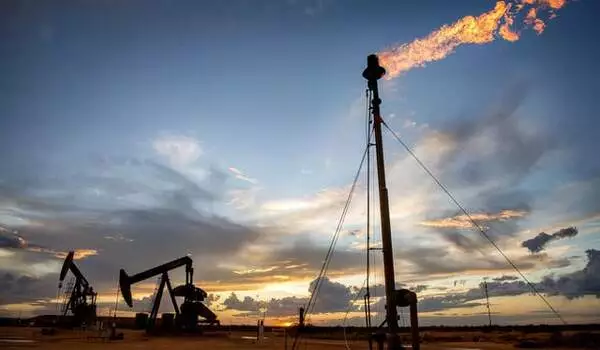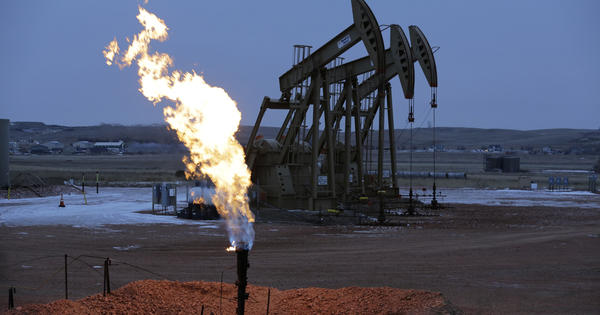When natural gas is produced as a byproduct of oil extraction or poses a safety risk, the gas is frequently vented or flared. These extravagant practices pollute the air we breathe, contribute to climate change, deprive states and individuals of revenue, and waste the recovered resource.
According to new research, flared natural gas from oil wells appeared to cause an increase of around 11,000 hospital visits for respiratory reasons in North Dakota up to 60 miles away from oil drilling sites. The paper, which was recently published in the Journal of Public Economics, investigates the environmental health costs of flaring, or the burning of natural gas byproducts during crude oil extraction, in North Dakota between 2007 and 2015, during the state’s oil boom.
Researchers found evidence of a causal link between natural gas flaring and increases in hospital visits for respiratory health. They estimate that a 1% increase in flared natural gas increases the hospitalization rate by 0.73%.
“The shale oil boom in North Dakota happened so quickly, and the area is so far from other oil drilling locations, they didn’t have the infrastructure to process and clean the natural gas,” said lead author Wesley Blundell, an assistant professor in Washington State University’s School of Economic Sciences. “The data shows a rapid increase in flaring and a significant impact on human health with the increase in hospital visits.”
We were shocked by how unfair wind is. We found that 50% of the pollution from flaring went to areas that extracted less than 20% of the oil wealth. The people paying the health costs aren’t necessarily the same people getting the benefits of drilling.
Wesley Blundell
The researchers looked at drilling and GPS data to map where flaring occurred, then reviewed hospitalization records, using anonymous hospital data of health codes for external respiratory reasons for the visits.
Blundell and co-author Anatolii Kokoza also investigated whether the increase in hospital visits was caused by the flaring, or merely correlated with the issue. They eliminated many other potential causes, including the increase from more vehicles being driven due to the oil boom or from more people moving into the area.
The biggest surprise for Blundell wasn’t that the flaring caused more people to require hospital visits. It was that people affected by the dirtier air aren’t necessarily the ones benefiting from the oil production.

“We were shocked by how unfair wind is,” Blundell said. “We found that 50% of the pollution from flaring went to areas that extracted less than 20% of the oil wealth. The people paying the health costs aren’t necessarily the same people getting the benefits of drilling.”
Natural gas is often thought of as a “clean” energy, but that’s because it is captured and processed when used for electricity or to fuel vehicles. The raw gas released from drilling is contaminated with a wide variety of pollutants. Burning spreads those contaminants far and wide, hurting the health of people that may have nothing to do with oil, the researchers found.
The North Dakota example allowed the researchers to look at data for hospital visits from before the shale oil boom, during those unrestricted years, and after that period when flaring was more regulated and restricted. Having that specific window showed the impact flaring has on human health.
“If those regulations had been in place from the start of the boom, the state would have likely seen 11,000 fewer respiratory hospital visits,” said Blundell, the lead author on the paper. “And that’s in a relatively low population density state. We imagine the impact would be higher in a more populated area.”
That cost to human health, added to the cost of greenhouse gas emissions costs, makes flaring even more expensive for the areas surrounding oil extraction. During the time when North Dakota had few restrictions on flaring, the state accounted for 3% of worldwide flaring, more than all but 10 countries on its own. That also means flaring is a continuing issue around the world that is potentially causing millions of people to breathe air polluted by often-years-long flames.
Up to now, the focus on flaring has been the environmental climate cost, releasing carbon dioxide into the atmosphere, Blundell said. There have been lawsuits in Texas over health impacts, and the World Bank has been fighting to reduce flaring around the world for this reason.
















